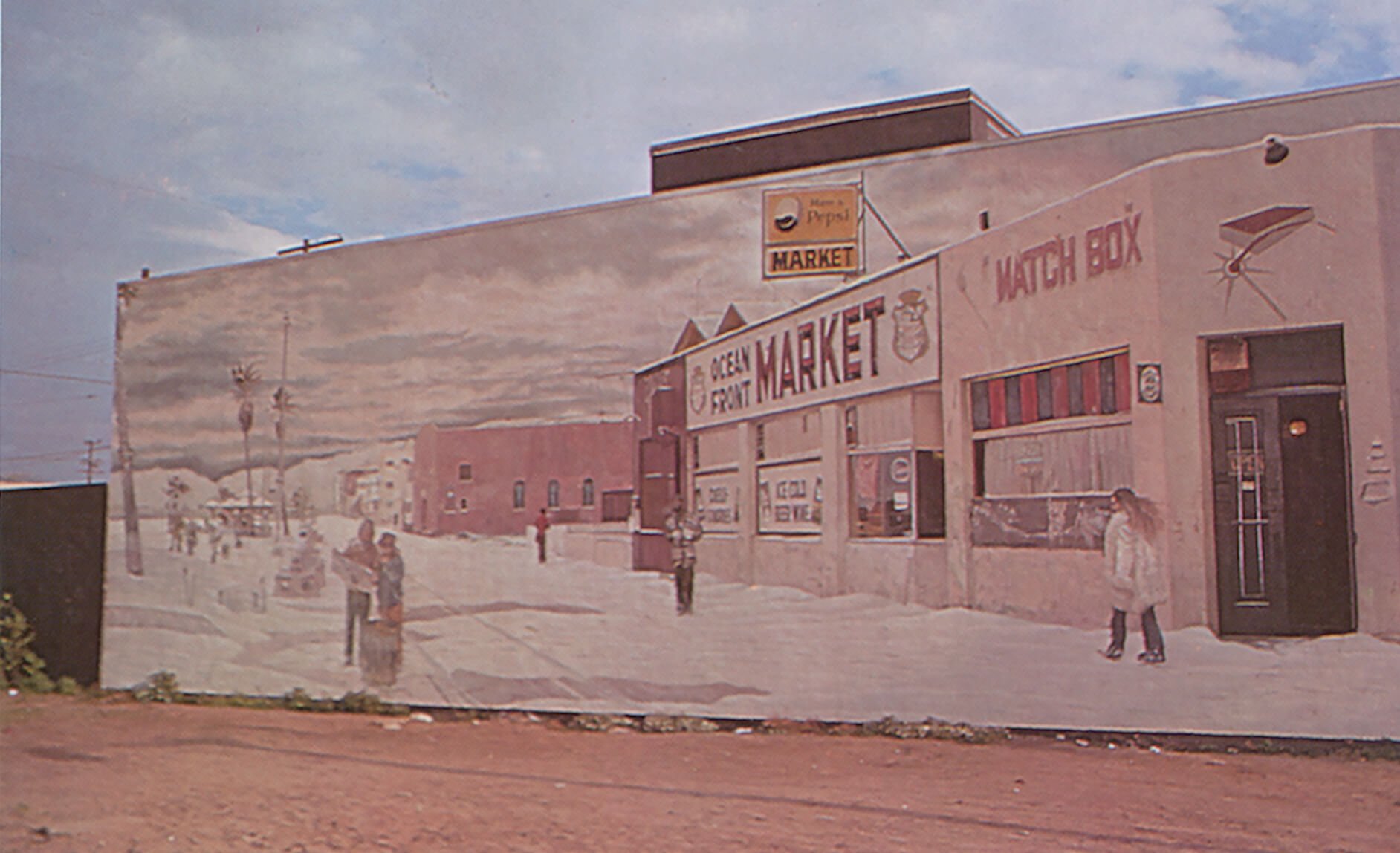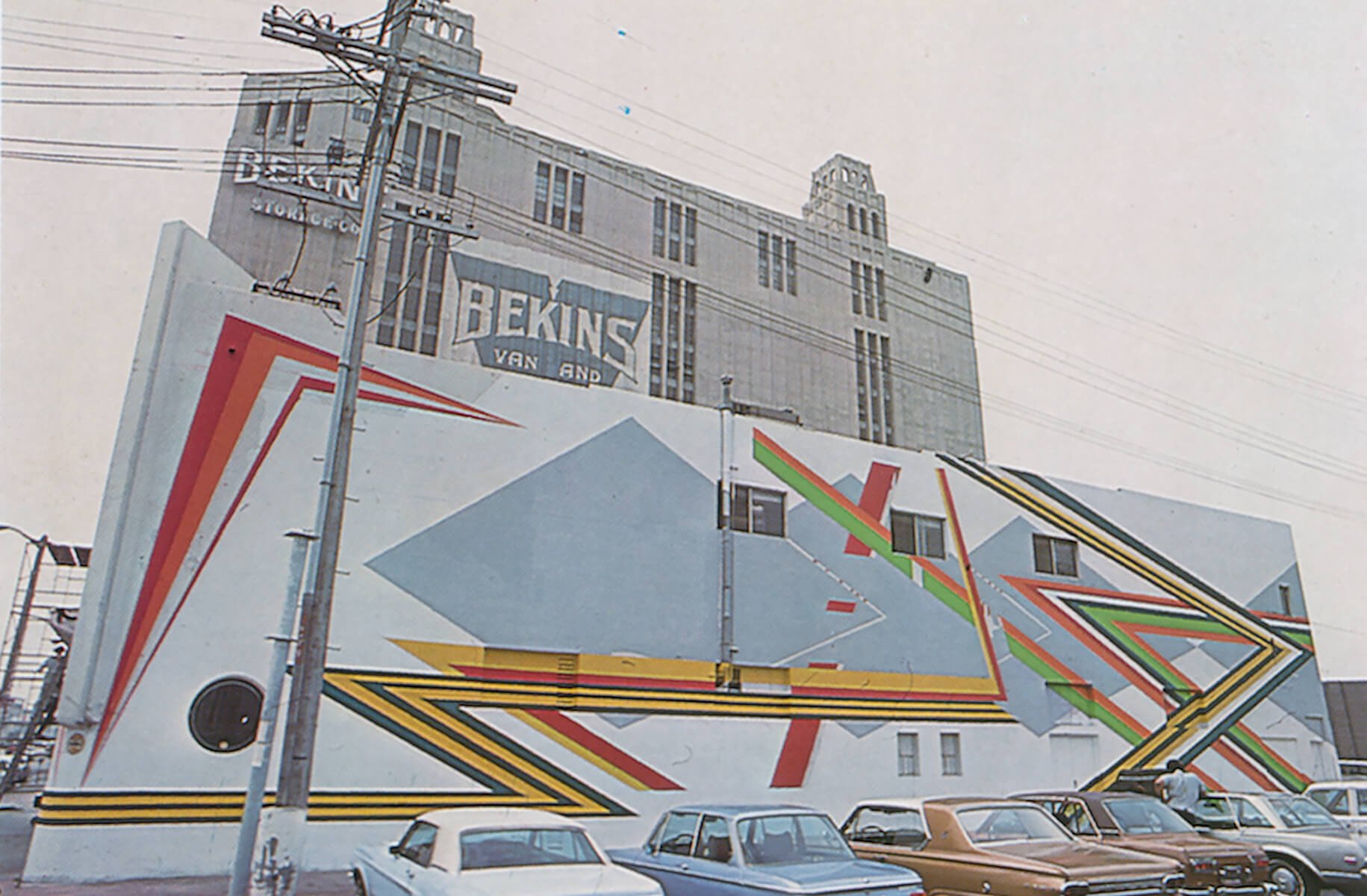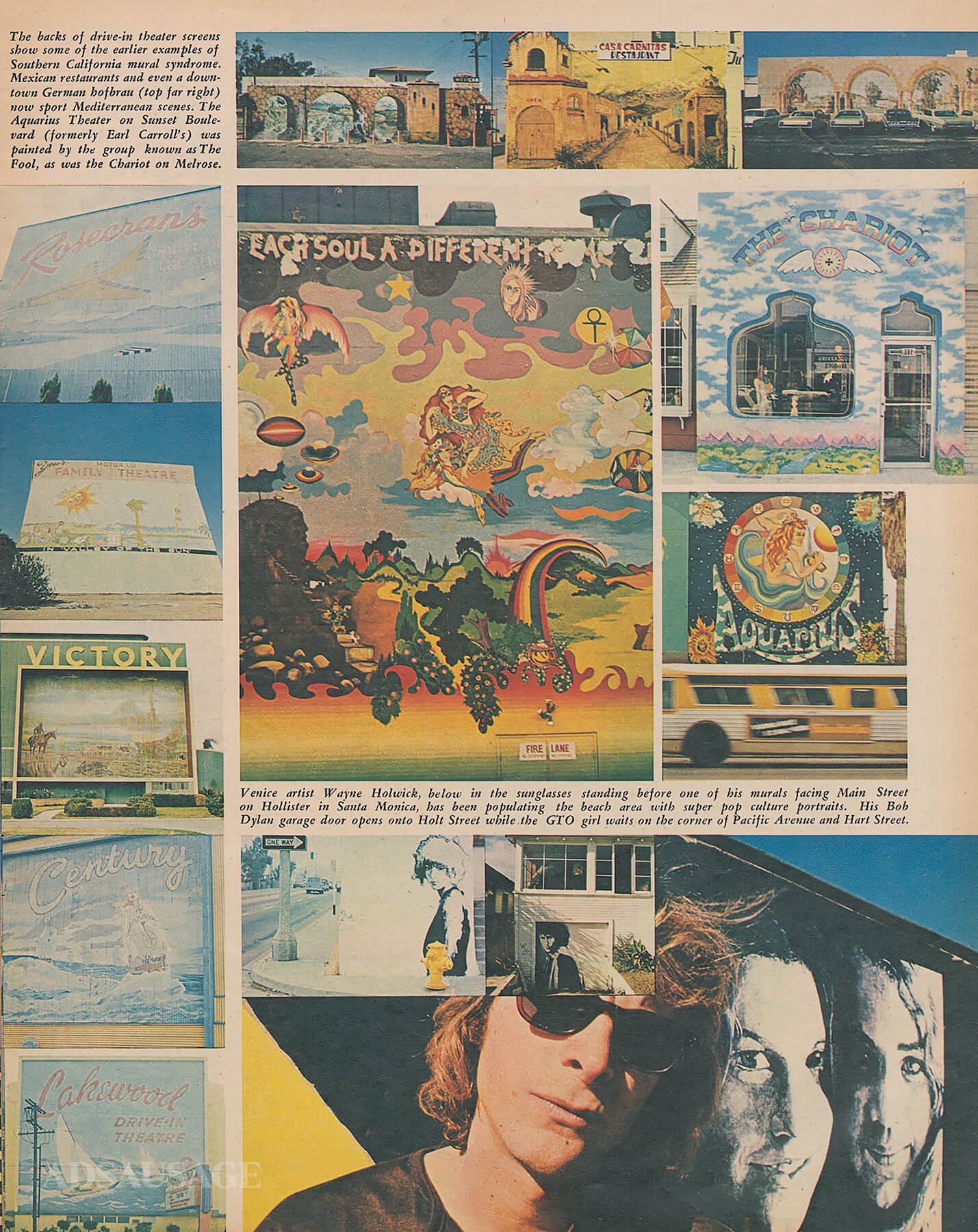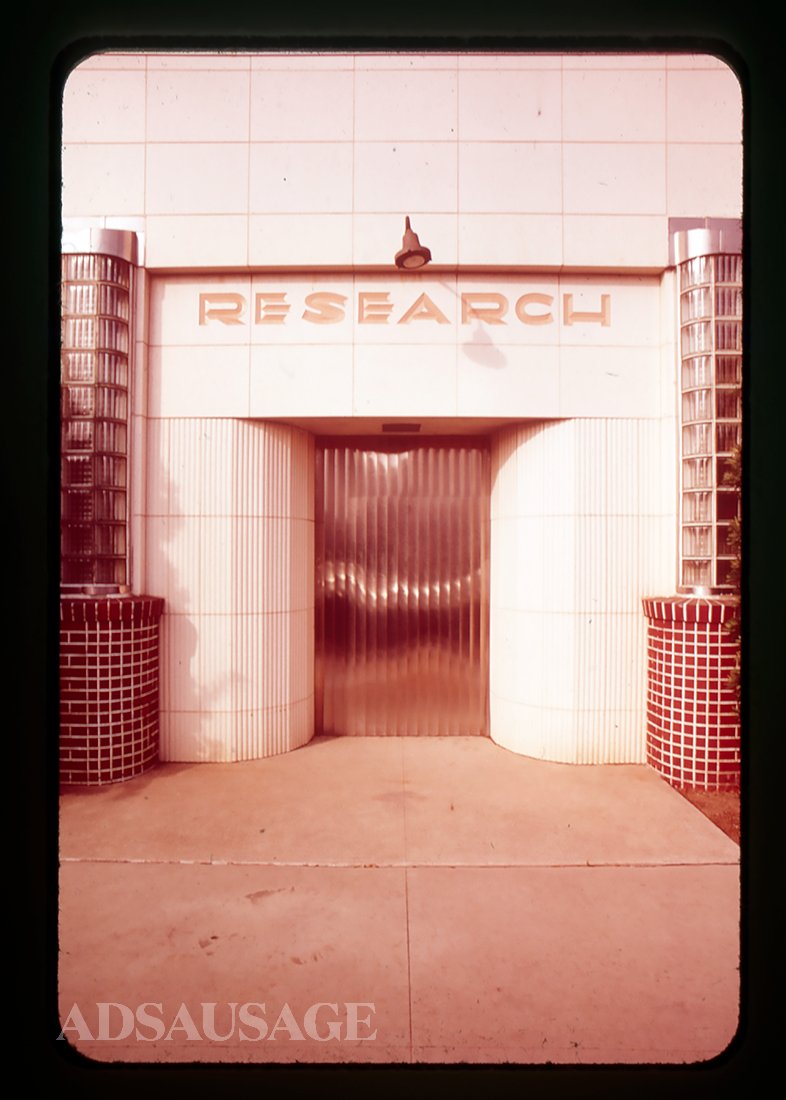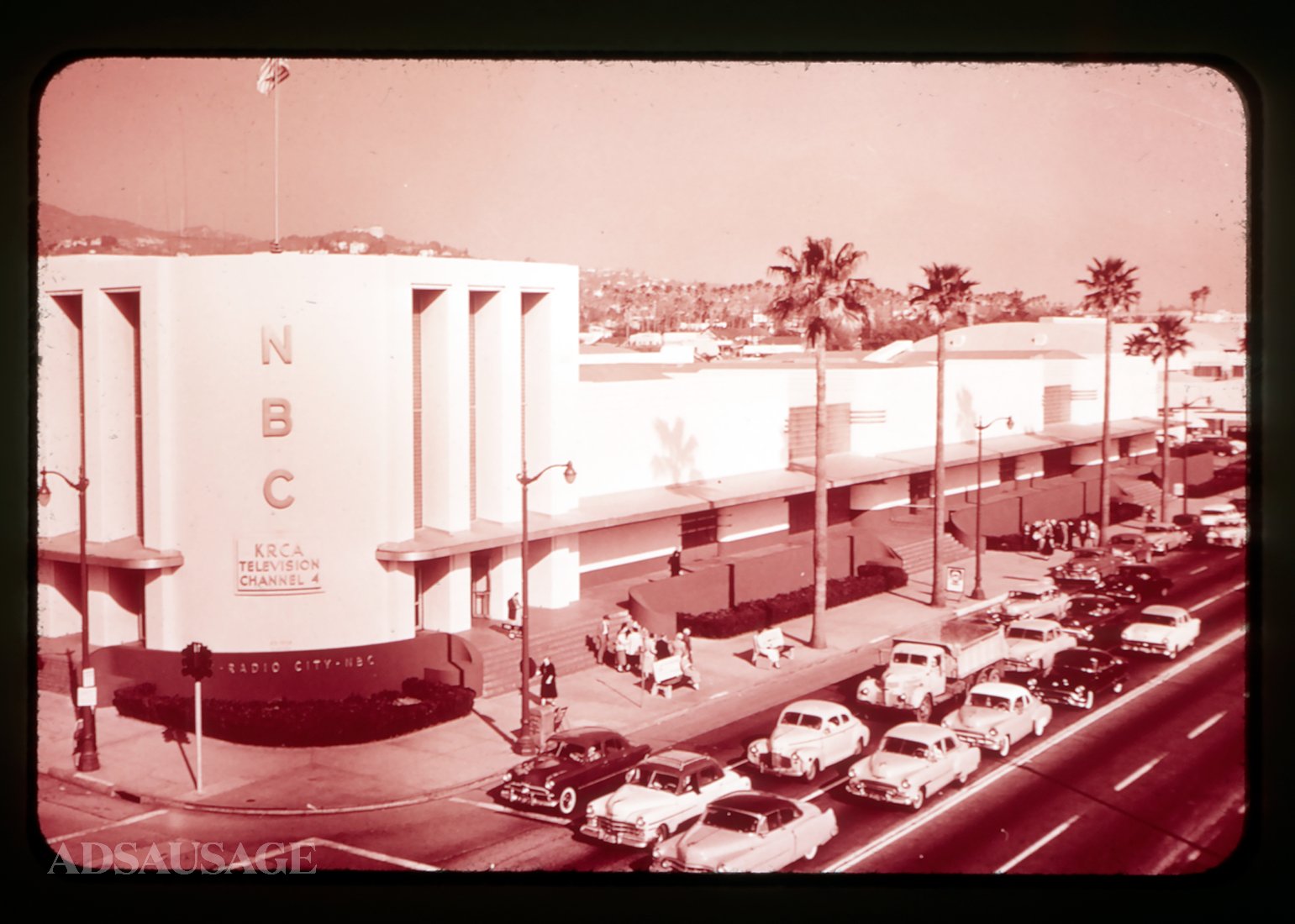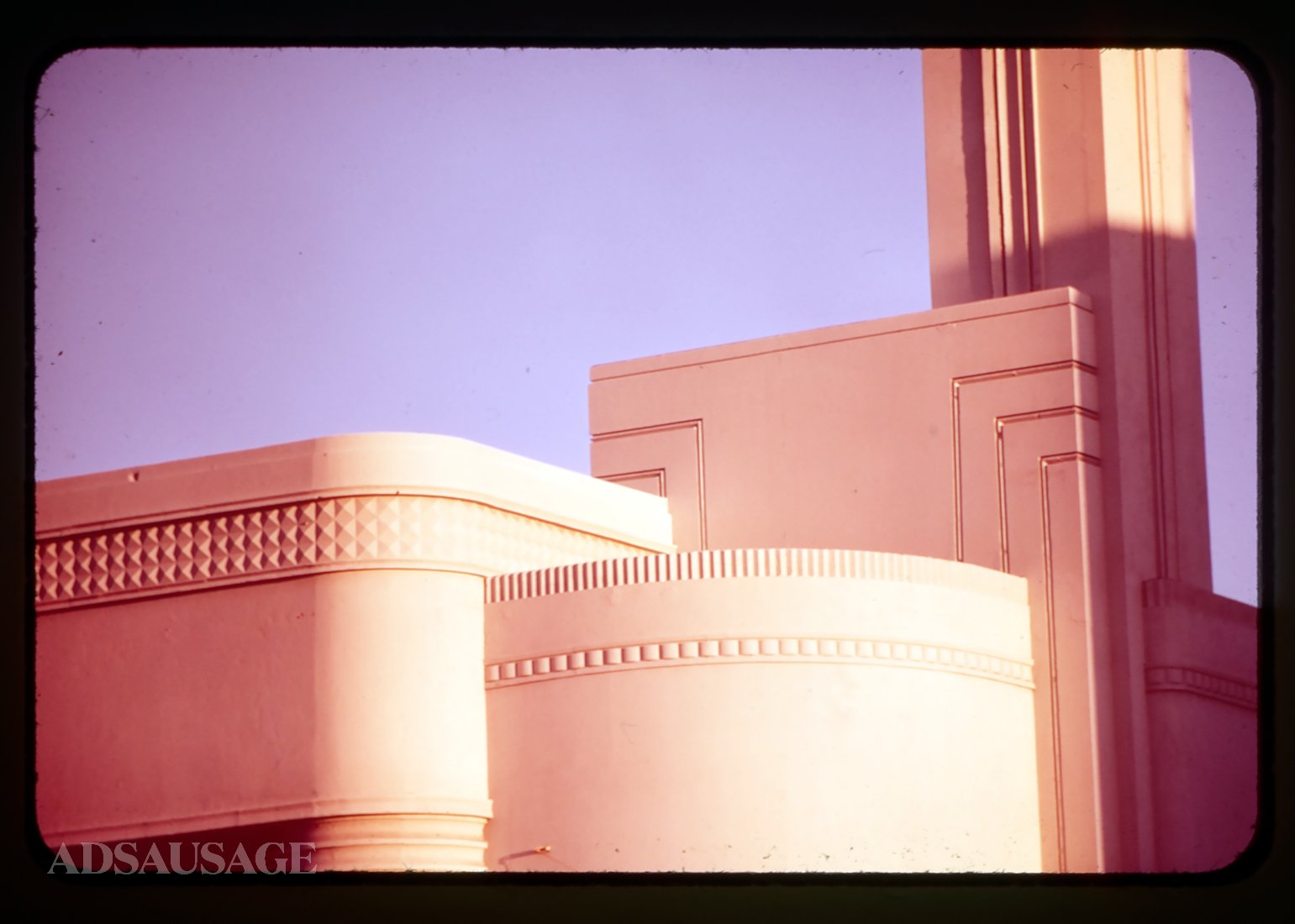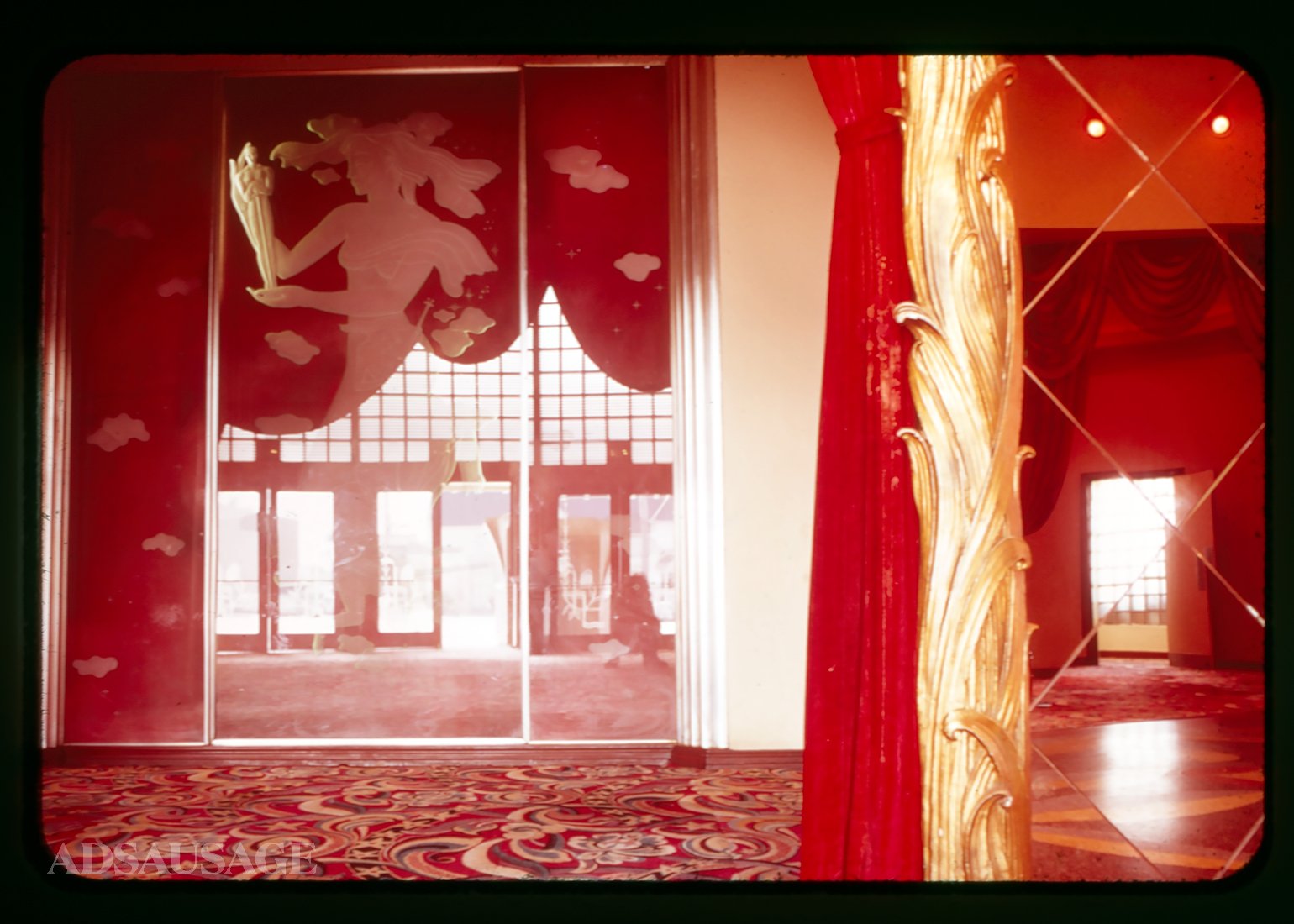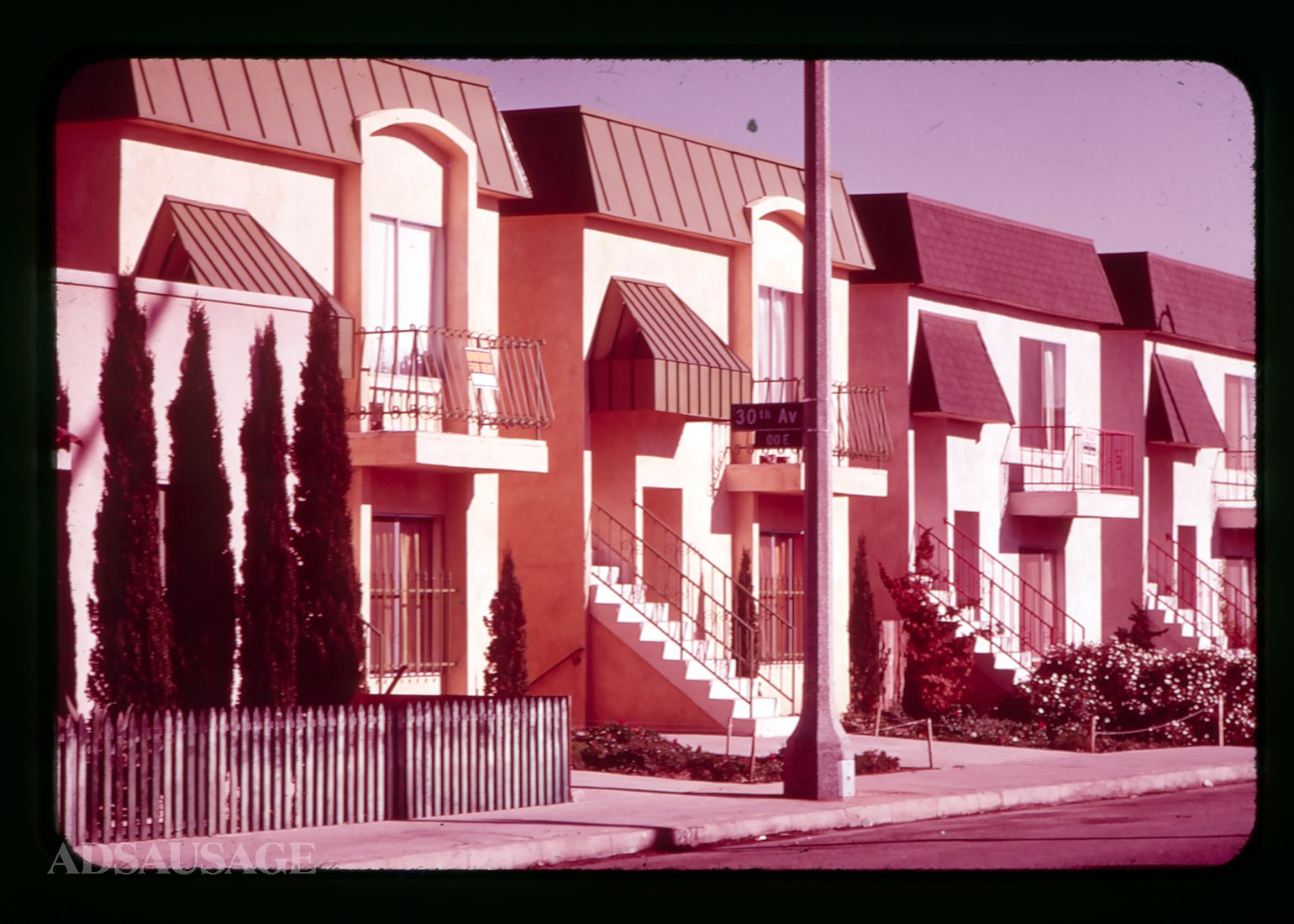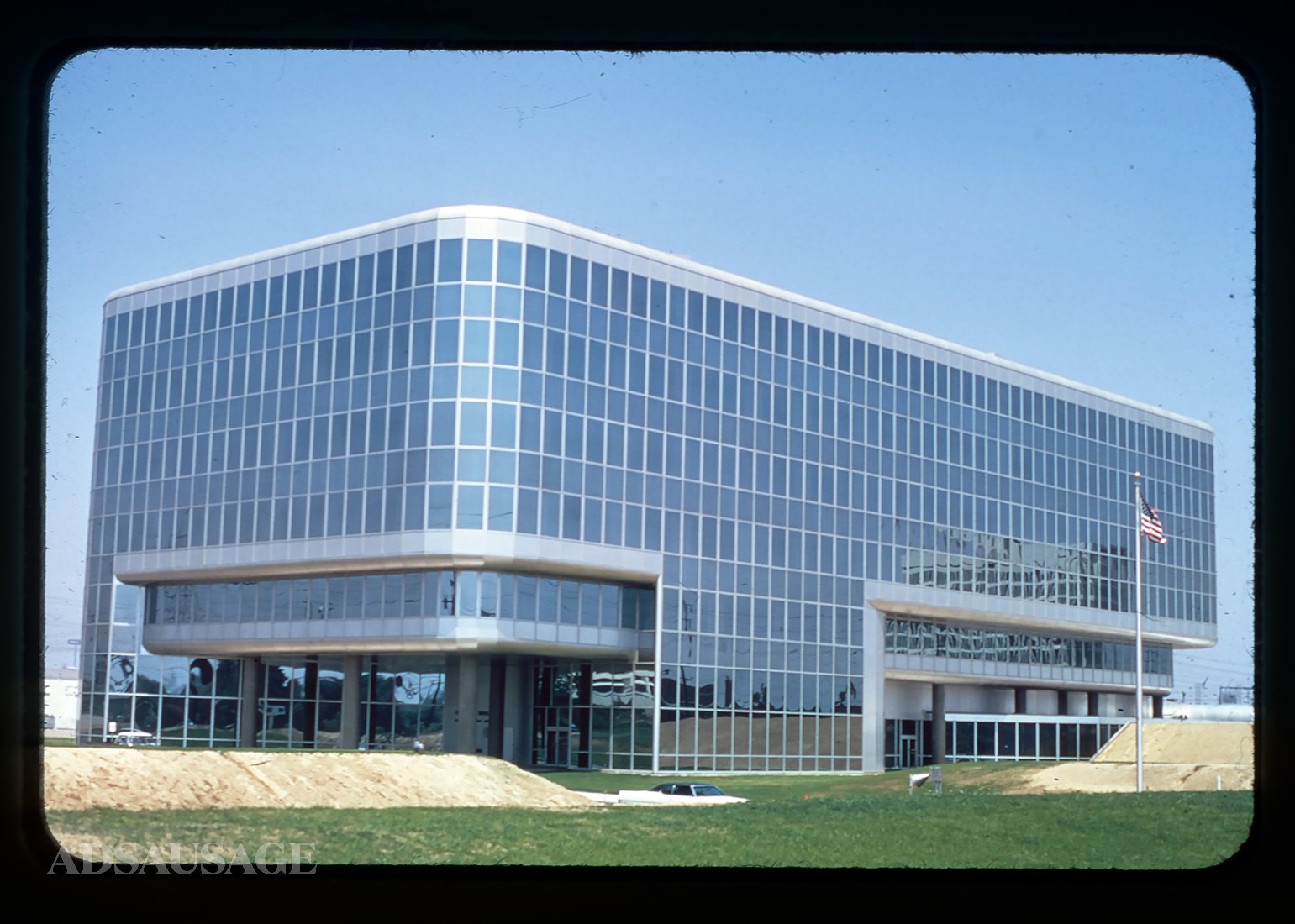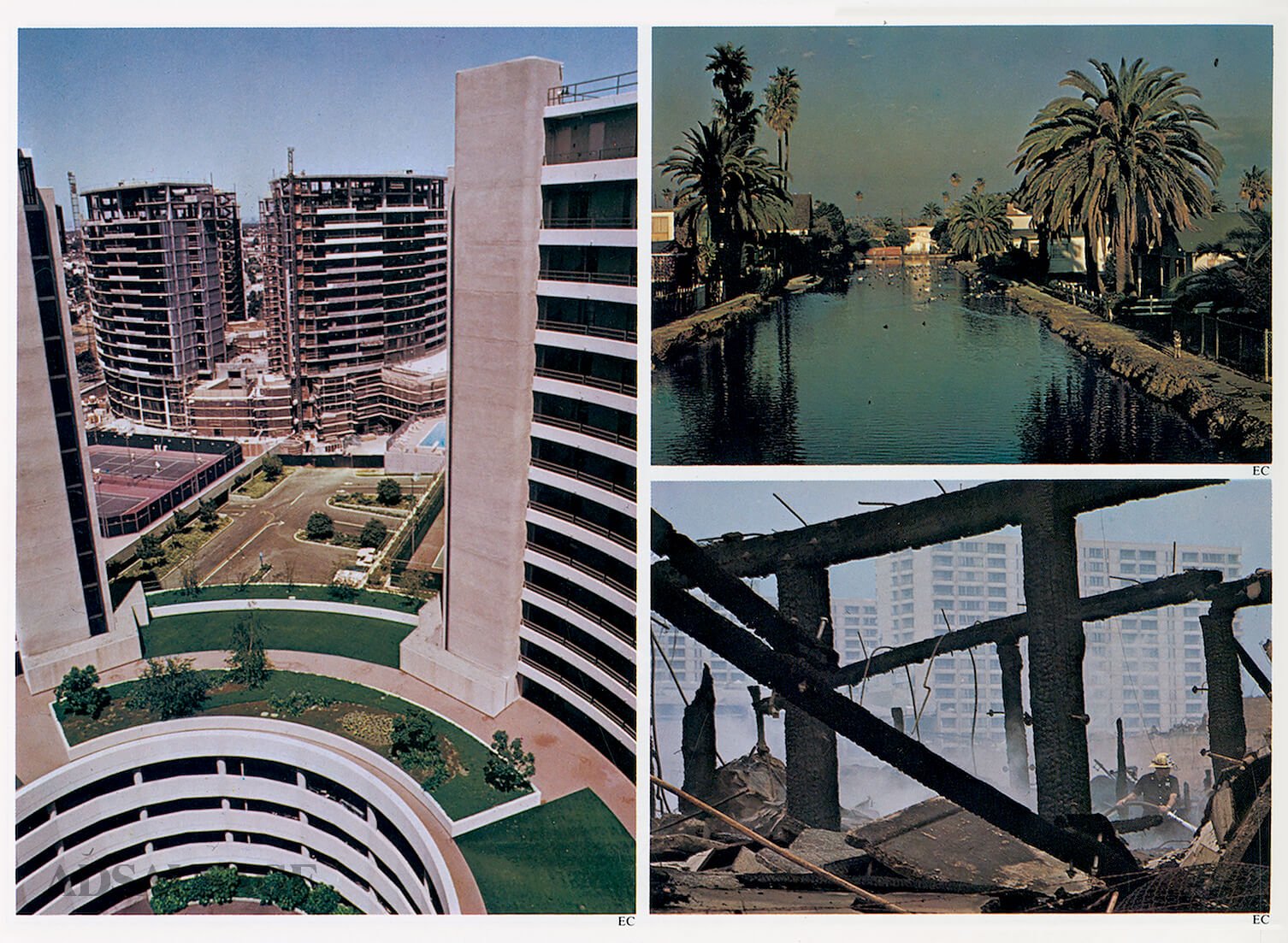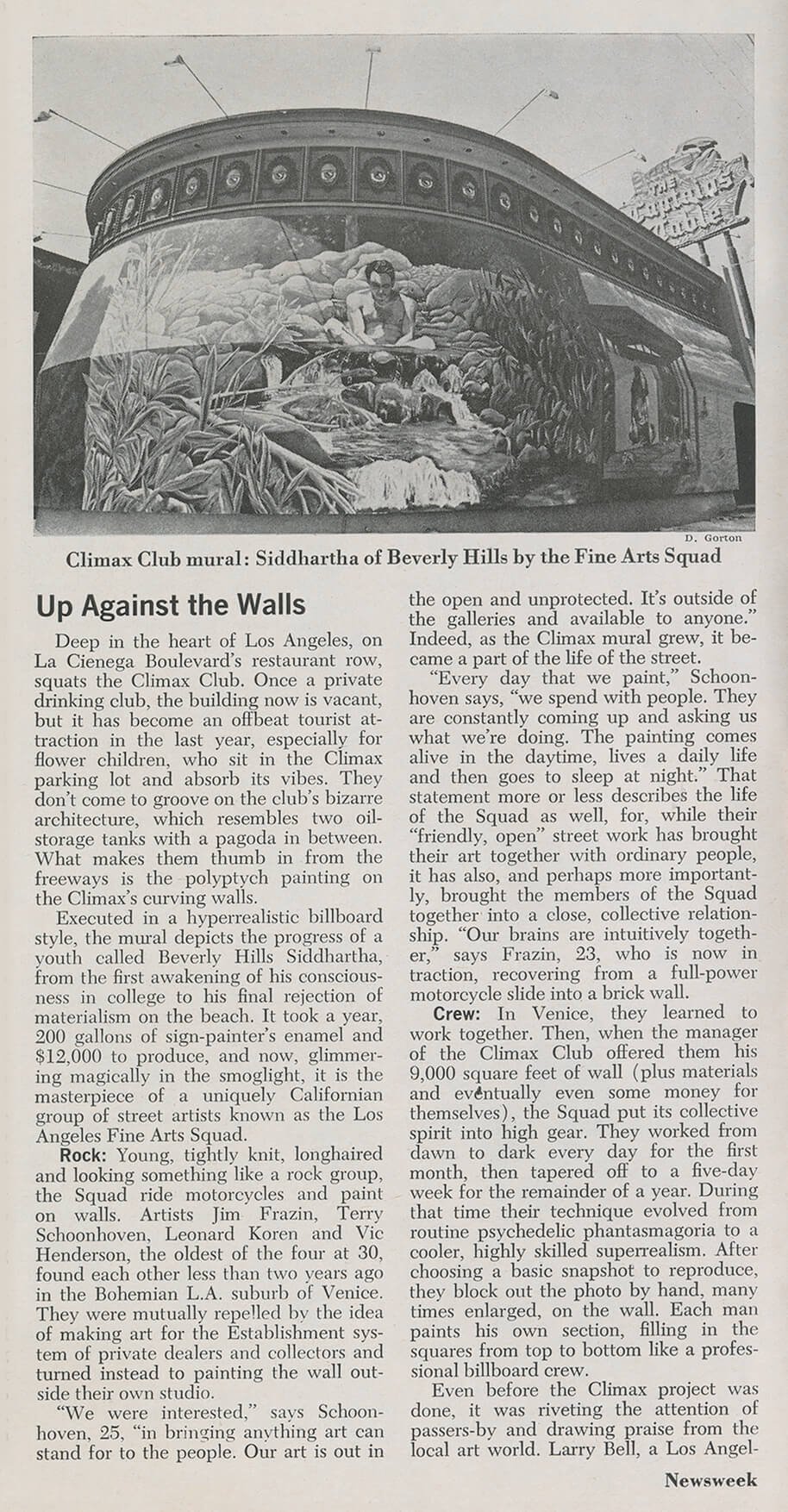Environmental Communications
“L.A. is Truth”
The group Environmental Communications, formed in 1969, comprised several individuals, including psychologist Dr. Bernard Perloff, Douglas White, David and Gary Greenberg, photographer Roger Webster, and Ted Tanaka.
Sharing a common love of the environment, the eclectic media collective of designers and filmmakers initially lived communally in a house on the beach but found more stable accommodation in a Mediterranean Revival building on Windward Avenue — their studio formerly occupied by Chicano Restaurant, operated by Mambo Joe and Nicki Jay.
Pink House, 1969 (destroyed). The first home of EC was a small stucco bungalow on the beach, and one of the group’s first projects was for each to take a brush and start painting.
From the beginning, the multimedia workshop created films and slides of man-made environments and street-paintings, often documenting them using time-lapse video. It helped that Greenberg's family-owned Standard Brand Paints ("We're not too big to care").
In November 1970, "EC" sponsored film events, including the Venice Film Fricassee. This outdoor event lasted from dusk to dawn and was a joint effort with the Los Angeles Arts Squad, also based in Venice and led by Leonard Koren.
We are a matrix for the use and distribution of media to express relationships in man’s environment. We explore and document physical and cultural surroundings through the use of still photography, film, sound, and videotape.
- 1971
Other events included the first Ecology Circus at the Topanga Center for Human Development in 1971. Under the “Recycle Your Psyche” theme, the environmental awareness event featured an audio-visual presentation and “rap sessions.” More considerable exposure came when their film accompanied György Ligeti’s “Atmospheres” at the Hollywood Bowl in 1971.
Based on the neon lights in Las Vegas, the film was designed so dual projectionists could vary the speed to synchronize with different conductors’ tempos.
In 1975, the roster at EC shifted as Perloff and White departed, and new staff members, such as Valerie Daley, George Van Noy, Susan Sullivan, Jody Kent, and Sheri Tanibata, were brought on board. During this time, EC gained recognition as a valuable resource for visual information that had previously been overlooked.
David Greenberg edited the book Big Art: Megamurals and Supergraphics, printed in 1977 by Running Press. Some of the more pertinent pages are shown here.
The group sold approximately 15,000 slides monthly, with the most sought-after materials focused on Los Angeles. Interestingly, interest was not limited to the city but extended beyond it. The group speculated that locals, who were already aware of their work, may have been too familiar with their surroundings to appreciate them fully.
The team was dedicated to documenting their interests and establishing a network of like-minded individuals, eventually publishing zine-like pamphlets and catalogs highlighting their work.
Los Angeles Times West, January 1971.
The group staged an expansive exhibition at the Los Angeles County Museum of Art in 1977. The mounted slides and video show were part of the museum’s five-part exhibition, “California: Five Footnotes to Modern History”.
In more recent times, the group had their work featured at a gallery at LAXART in Santa Monica.
L.A. Moderne, 1971 & 1973
Universal Commercial Architecture/Residential Dingbats, 1972
Built in 1964, this apartment house in the Ocean Park neighbourhood in Santa Monica is still around.
Sadly, it’s been stripped of all the character that made it worth photographing in the first place.
“Great Western Building, 1973”
West Coast Contemporary Architecture, 1979.
Published by Constitutional Capers, 1976. Photographs by Roger Webster.
Los Angeles Fine Arts Squad
Brooks Avenue Painting. Water-blasted in 2013 by the building’s owner, replaced with a replica of the original, painted by another artist. Henderson later sued under the Visual Artists Rights Act.
Known for their visionary disaster scenes, they were founded by Terry Schoonhoven in 1969. Leonard Koren, Jim Frazen, and Vic Henderson were rounding out the ambitious group. Known for producing “cool, affectless, Trompe-l'œil murals” in the early 1970s, their work included;
Newport Harbor Art Museum/Balboa Pavilion. The group created a floating, painted plywood submarine.
Climax nightclub at 4th and La Cienega Blvd. Titled Beverly Hills Siddhartha, the satirical, photo-realist mural was whitewashed around 1972 when the building changed owners.
“Venice in the Snow” or “Venice After Snowstorm” at 19th and Oceanfront. Located at
1905 Ocean Front Walk, the mural failed to gain classification as a “cultural-historical monument.” A three-story apartment was built soon after.
Isle of California. 1971–72. 42' × 63'.
Village Recording Studio. Painted by Terry Schoonhoven, Victor Henderson, and Jim Frazin.
Commissioned by Geordie Hormel of Hormel Meats.
After the group disbanded in 1974, Terry Schoonhoven (who passed away in 2001) remained very active. Some of his later works included;
St. Charles Painting - completed in 1979 on the side of the St. Charles Apartments. Long since faded, the mural was replaced by Touch of Venice, created by Jonas Never in 2012.
“Cityscape” - Harbor Freeway at Wilshire Blvd, 1984.
“Traveler” - Union Station, 1993.
“Jewish Contributions to Medicine” - Cedars-Sinai, 1999.
Leonard Koren was admitted to the UCLA Graduate School of Architecture and Urban Planning, and later created WET (The Magazine of Gourmet Bathing) in 1976. After producing the magazine for six years, Koren wrote and designed the book New Fashion Japan in 1984.
Website.
Vic Henderson ceased working on murals by the late 1970s but continued painting, and can be found on Facebook.







